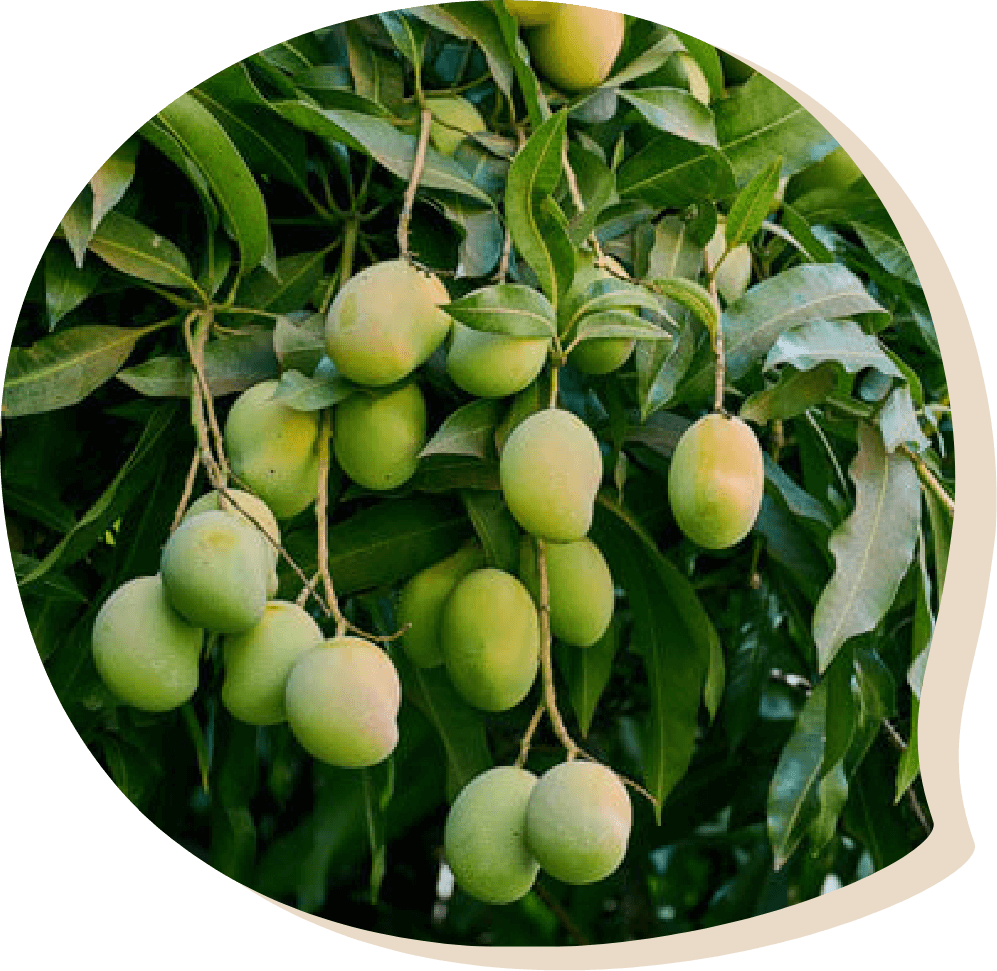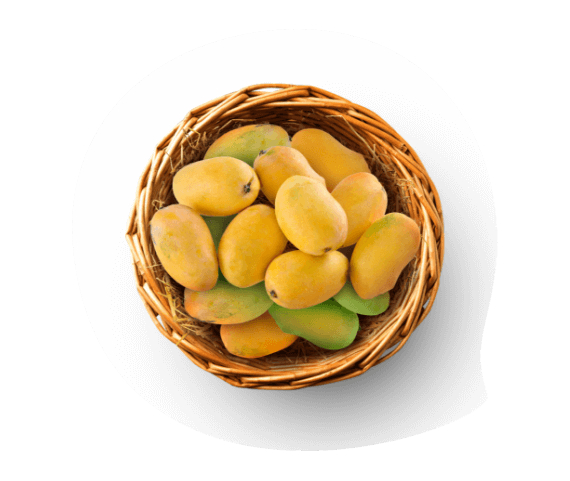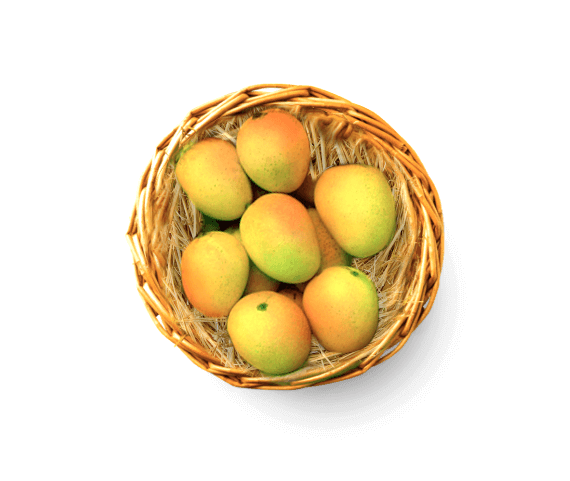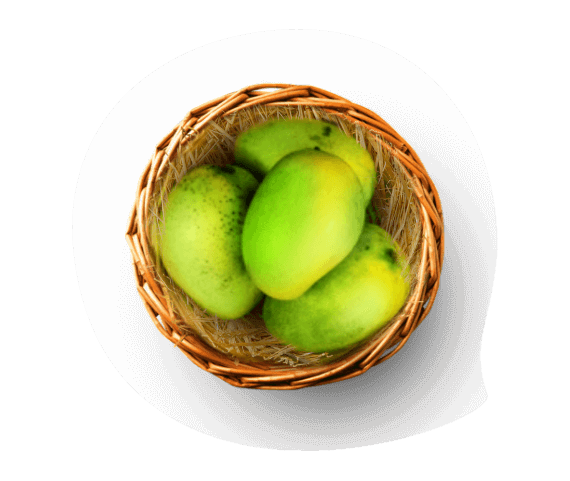About Payari Mangoes

Origin
The fruit Payari mango is of Indian origin grown in the Konkan region of Maharashtra and some parts of Karnataka. It is a variant of the Alphonso mango and is cultivated in the Devgad, Ratnagiri, Raigad, and Pawas region of the Konkan belt. It is also grown and harvested in India’s east side, where it is called the Suraj Mukhi Payari mangoes
- Available from the middle of April or May
- The mango has a short shelf life
- Weighs around 200 gms to 250 gms
Appearance
The Payari mangoes look green from the outside, but the flesh is of bright yellow color with a shade of saffron. The fruit has a small nose at the bottom. The Suraj Mukhi Payari mangoes have a slight tinge of red. The thin and firm skin makes these mangoes more delicate, hence have a short life and should be eaten immediately after ripening.
Taste
The Ratnagiri Alphonso mango is extremely aromatic, which is noticeable from a distance. The soft texture and sharp, sweet taste make them popular among the mangoes. The delicious fruit has a smooth, rich, and sweet flavor with an impeccable aroma, which one cannot resist eating. The juicy pulp with a hint of fiber makes them delicious.
Certification
Our payari mangoes are 100% residue free as well as organic certified, we don’t use any chemicals to ripen them or improve their size or quality.
We believe in organic fruits and its eco-system.
FAQS
The original Payari mangoes look green from the outside when its raw, but the flesh is of bright yellow color with a shade of saffron. Another distinct thing about Payari mango is that it has a small nose at the bottom.
The most accurate way to spell it is ‘Payari’ mango but some people are confusing it with the wrong spellings like ‘payri’ and ‘pairi’.





